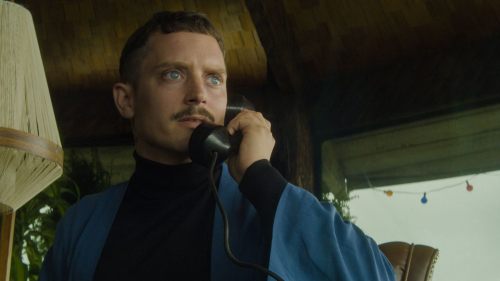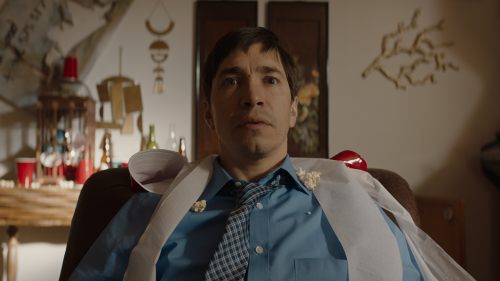Fantastic Fest Review: HALLOWEEN Wraps The Slasher Formula In New Context
Halloween is like John Carpenter’s musical theme. A simple sequence, a few notes. It repeats and evolves, but only slightly. Sequels (and, uh, that remake) have mashed up the formula, but Halloween is really one thing: a relationship between an attacker and a victim. When David Gordon Green’s new film pushes away distractions to focus on that core idea, it feels like a revelation.
This sequel behaves as if Carpenter’s original 1978 film never spawned a series, throwing away all previous franchise and remake ideas. The choice of “Halloween” as the title suggests a specific point of view. Unlike Rob Zombie’s 2007 remake, this is an evolution of John Carpenter’s pattern. It’s not a remake, but a recontextualization.
After brushing away those franchise cobwebs, Green and co-writer Danny McBride are left with a simple setup. Michael Myers has been confined for forty years. Laurie Strode, who narrowly escaped death at Michael’s hands in 1978, is defined by her near-death experience. Superficially, she has toughened up. Laurie has dedicated herself to extensive weapons training. She’s built a heavily defended compound as a base of operations in the event Michael is freed.
In truth, Laurie’s life has been a constant struggle. Jamie Lee Curtis revives Laurie as a survivor who held on by her fingernails. Barely. She’s fraught and frayed. Curtis shows Laurie slipping on a mask to squeeze through short interactions with other people, then lets us see how quickly that facade can slip and shatter.
Effectively an outcast, Laurie lives on the margins of a community that doesn’t want to grapple with what Michael did. Instead, Haddonfield citizens, and her own family, allow Laurie — or force her — to shoulder the entire burden of Michael’s legacy. She longs for a final confrontation with her attacker, but her eyes flicker with doubt that she’s ready for it.
While Laurie wages a constant battle with her own history, Michael is mythologized. He’s the one a couple journalists want to study - a subject that leads them to Laurie’s door and ultimately sets the new story in motion. As Green and McBride develop the plot, they look back outward at the horror fandom that has turned Michael Myers into an icon.
Green fleshes out Laurie’s persona by returning to signature images from John Carpenter’s original film. We’re used to franchise revamps recycling recognizable elements as fan service. When Green and McBride lean on signature images, however, they’re showing us something about Laurie as an alienated, struggling outsider — and someone whose persona has been defined by her encounter with Michael Myers.
In turn, Laurie and her family — daughter Karen, played by Judy Greer, who gets far more to do here than most movies offer, and granddaughter Allyson, played by Andi Matichak — help us see Michael in a new light. These characters, all of whom show different effects of the lingering trauma from Michael’s attack, offer a complex reference point for fear. We know the effect Michael had on her in his last hours of freedom, and we’ve seen what that wrought on her relationships with multiple generations of family. That’s a lot heavier than the panic-button response generated by a guy with a knife.
Dread radiates from the best sequences in Halloween like heat shimmer from a highway. Green indulges in a couple of spectacularly nasty flashes of violence, one of which is certainly among the most gory scenes in the entire series. But the most powerful scenes pivot around tension and dread, often pressing on the underlying nerve of persistent trauma.
Not everything works. There’s flab in the middle of the film, where Green and McBride fall back to somewhat stock slasher movie characters and scenarios. Scenes of Michael directly stalking Laurie and her family are forceful, but his nighttime stroll through Haddonfield isn’t as tense. A subplot involving Michael’s current psychiatrist plays like some connective tissue was cut, and the doctor’s turning point is awkwardly staged.
When Halloween hones in on Laurie and her family, and their relationship to Michael, we’re seeing a vital new take on a formulaic concept. The new score by Carpenter and his own family (son Cody, and godson Daniel Davies) helps, slightly expanding the audio palette — particularly with a standout cue featuring a massively heavy guitar sound.
Above all, the decisive moments in which three generations of Strode women are able to confront their shared past are energized by a spirit rarely seen in any of the Halloween sequels. It seems like no series ever ends at this point, but this would be an ideal, satisfying finale for Halloween.
This article is part of B.M.D. Guide To: Halloween



